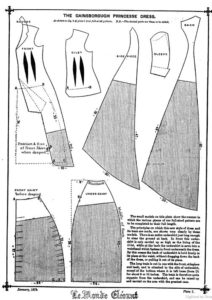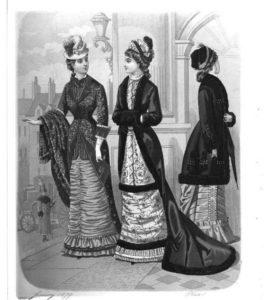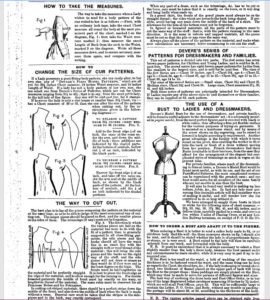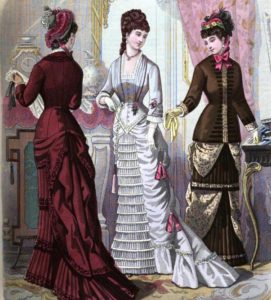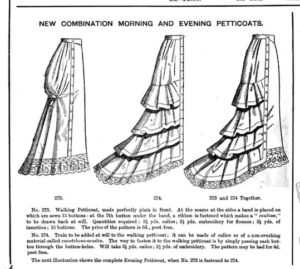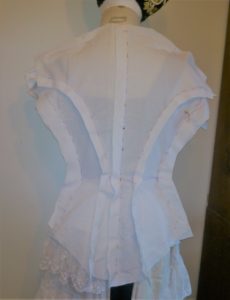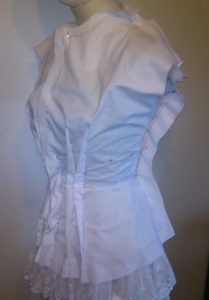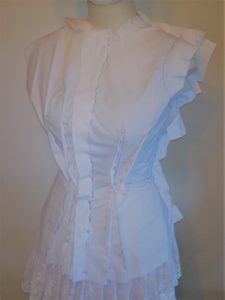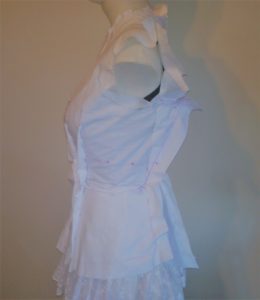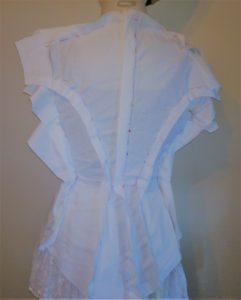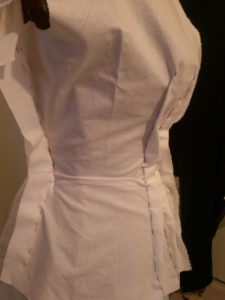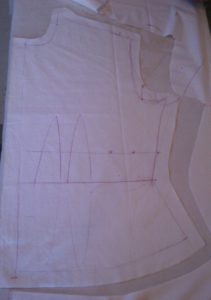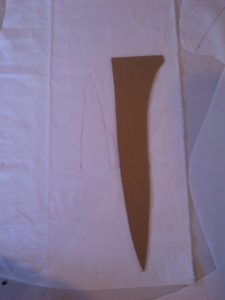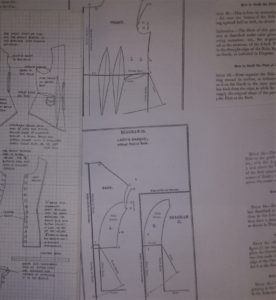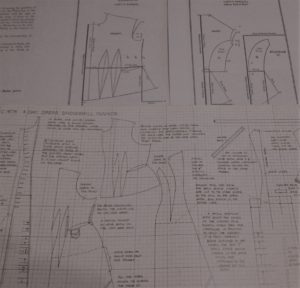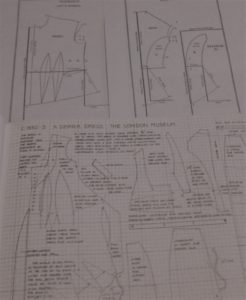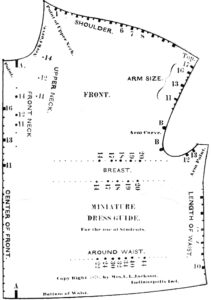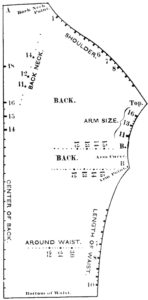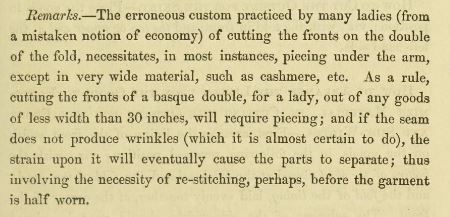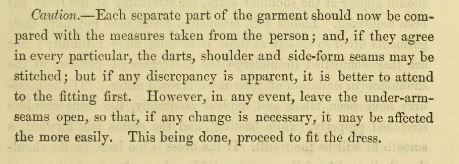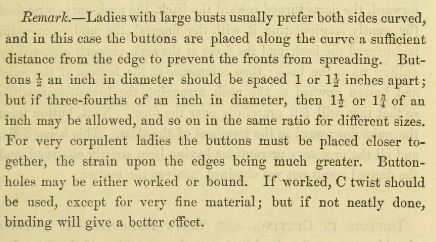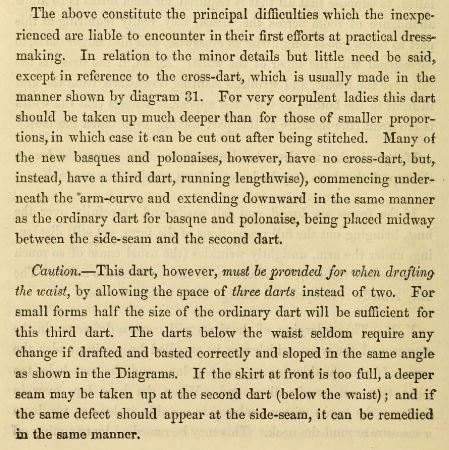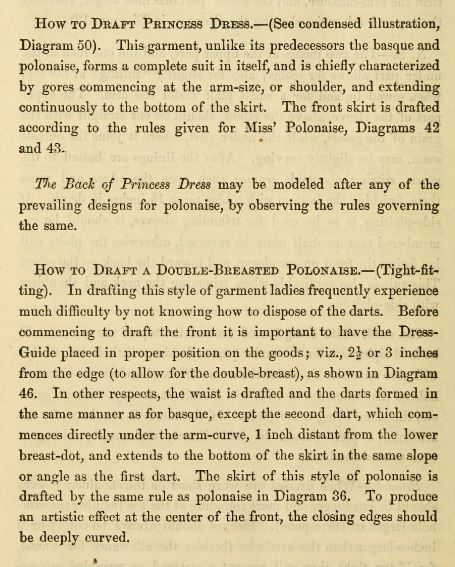A Concise Treatise on Ladies and Misses’ Tight-fitting Garments

A Concise Treatise on Ladies and Misses’ Tight-fitting Garments
1886
And the tradition of drafting books appearing several years older than pattern sketches.
However this is great as this book deals with basically natural form shapes!
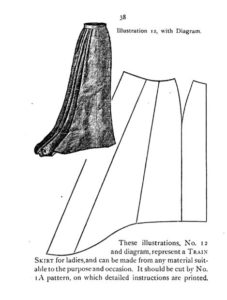
sylvia’s home journal

Sylvia’s Home Journal
1879
The full pattern is not available, but it is interesting to see the difference in how ready made patterns are drawn at this time compared to how drafting blocks are drawn.
Drafting blocks are generally still very heavily 1860s in shape whiles these pattern sketches tend to show the very long line of the era.
another dress making book

How to dress well on a shilling a day: a ladies’guide to home dressmaking and millinery.
Highly recommended for the text as it describes the order of sewing and how to. That paragraph on the “bulgarian fold” is really amazing! At least for coming out and stating that the “peacock” style train is impossible to self arrange! Which is something I have trying to get across when getting photos of my gowns with trains- they need a wrangler to look good!
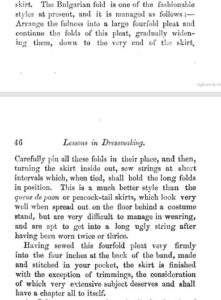
princesse dress source!
The World of fashion and continental feuilletons (1879-1880)
I have seen this in Patterns of Fashion 2 for years so it’s nice to be able to put it in context!
There is also a skirt pattern that shows the top and tailing cutting layout but also the curved upper section for fitting over the hips!
And this section is repeated a few times, handy for those who were collecting the magazines by month!
Plate 178 has a style I love, the self trimmed gown, the vertical folds at the neck.
Maybe I can do this with my princesse petticoat? It would make it so very much more useful!
There are other columes online too!
1876 draft update
The draft really didn’t need a huge amount of adjusting, I may just need to adjust some of my measuring 🙂
The back is lovely, it’s just too wide in the shoulders, and my mannequin does have a higher shoulder than me.
The front is a bit of a mess, I always have this trouble with drafting systems from this era though, so it’s no different. I can however use the changes made today to determine how to take measurements for the next run through.
So basically the same issues as with corsets I have scaled, with other patterns- I have a proportionally narrow torso. I am hour glass but I do not continue to taper out past my lower ribs.
But strangely I had to lower the waist at the side and raise it at the front. This is partly because I clipped the armscye and smoothed the excess towards the upper back and that then also spread down the side.
I also lowered the bust dart points, mainly because I think this mannequin has a very long shoulder to bust measure vs me. But it’s nice to see that this was a relatively easy remedy.
Overall? would recommend for someone who is used to these kinds of drafting tools.
The instructions are lengthy but a bit confusing only because the diagrams are super simple so it can be hard to work out immediate if you are looking at the the draft lines or the tool. But it was pretty easy to do once I got the hang of it. 🙂 Next step is to see if the tool will give the same corrected shape with the new measurements 🙂
The basque was very easy and worked really well for me for over a natural form shape 🙂
1876 basque
The science and geometry of dress
by Jackson, Louisa L., Mrs. [from old catalog]
Published 1876
So, the trouble with the system is the “bust” measure is a sort of not really measurable distance where the armhole (arm size) and the side seam end. And then you take the back measure separately. Not a full measure all the way around. I used my padded form but still estimated where the side seams would sit. I think I need to tweak it a bit more. But other than my near universal shoulder/side of bust fitting issues I think the scale works.
If I look at the patterns taken from existing garments the arm hole is most definitely not as per the first pass of the tool. I need to get a bit courageous about trimming here! Also to adjust the super rigorous dart placement- the drafting tool is quite old fashioned in that it feels like it’s from the 1860s-very early 1870s. This is about the time there should be two side back seams that slope a little more gently. So I think the tool will work, it just won’t look like the diagrams but will look like the extant items.
The additional steps to make a basque though are brilliant. And it does show exactly why the cross dart sits where it does. This is where fabric naturally folds in at the waist with the basque (called skirts in this book.)
You can see how the fabric is super full in the armscye and above the bust. I’ll smooth the fabric over the stand and then compare to the tool to see what I would recommend in terms of using modern equipment.
The book is very unyielding in the sens that the distance from CF and CB to first dart is specified. And the distance between darts also specified. The tops of the darts are also very much decided by the tool (while the height is adjustable the distance from centre front is not.
I do love the basque and how the darts are formed! If nothing else I am keeping the dart tool!
I compared the diagrams to extant patterns and yes, I will need to do what these do: rotate the armscye towards the centre front.
These are all from Patterns of Fashion.
1876 tool update
Okay, so the body templates are very wrong! My scale isn’t too far off but the markings on it are not perfect. I will do an annotated run through. One problem is the book says to lay the front waist tool 1″ from the edge of the material. but the tool already has a 1″ mark (A). That is not the 1″ that it needs to be set from the edge. Not if the bust measures are to work.
Having tried this tool I know now that the miniature is really not a perfect scale of the full tool as it will appear. The dart and side seam rules are good so I have now made a single file of all the miniature tools.
Some of the markings are wrong. The vertical measures should all be identical distances ditto the perfectly horizontal. So I scaled to the dart rule and made sure the distance between the edge and the lower bust mark as 9″ and this now makes all the “standard” measures line up.
The science and geometry of dress
by Jackson, Louisa L., Mrs. [from old catalog]
Published 1876
So these all match, I started with all the mini tools on one file and scaled. everything that I know to be inches seem to match up.
I’ll update my earlier post with the new files 🙂
some gems from the manual
The science and geometry of dress
by Jackson, Louisa L., Mrs. [from old catalog]
Published 1876
We cut on the fold due to wide fabrics, this explains why cutting fronts is best done individually.
Yes! The side is where you can do some final fitting tweaks. But it was better to adjust everywhere else first.
How to space buttons for a large bust- it depends on the button size.
The crossdart! (Fish dart) And how it was used and how the third dart came about (I think seen in at least one PoF garment).
Tips on how to draft a princess dress. I am so happy about the polonaise comments! I have been wondering if there were rules about this but no 🙂
Oh look, the perfect book!
https://archive.org/details/sciencegeometryo02jack
The science and geometry of dress
by Jackson, Louisa L., Mrs. [from old catalog]
Published 1876
Topics Dressmaking
So this is really interesting and does indeed help explain the fish dart in some garments.
Why?
The basic pattern blocks for bodices were still based on ones from the 1860s. This is to say the end at the waist. I’m started printing the pages up . The first section is for the basic bodice block, then there is a saque, next up are basques (ie bodices that extend past the waist.) So this is very exciting 🙂 My printer is liking the pages so that is also good!

